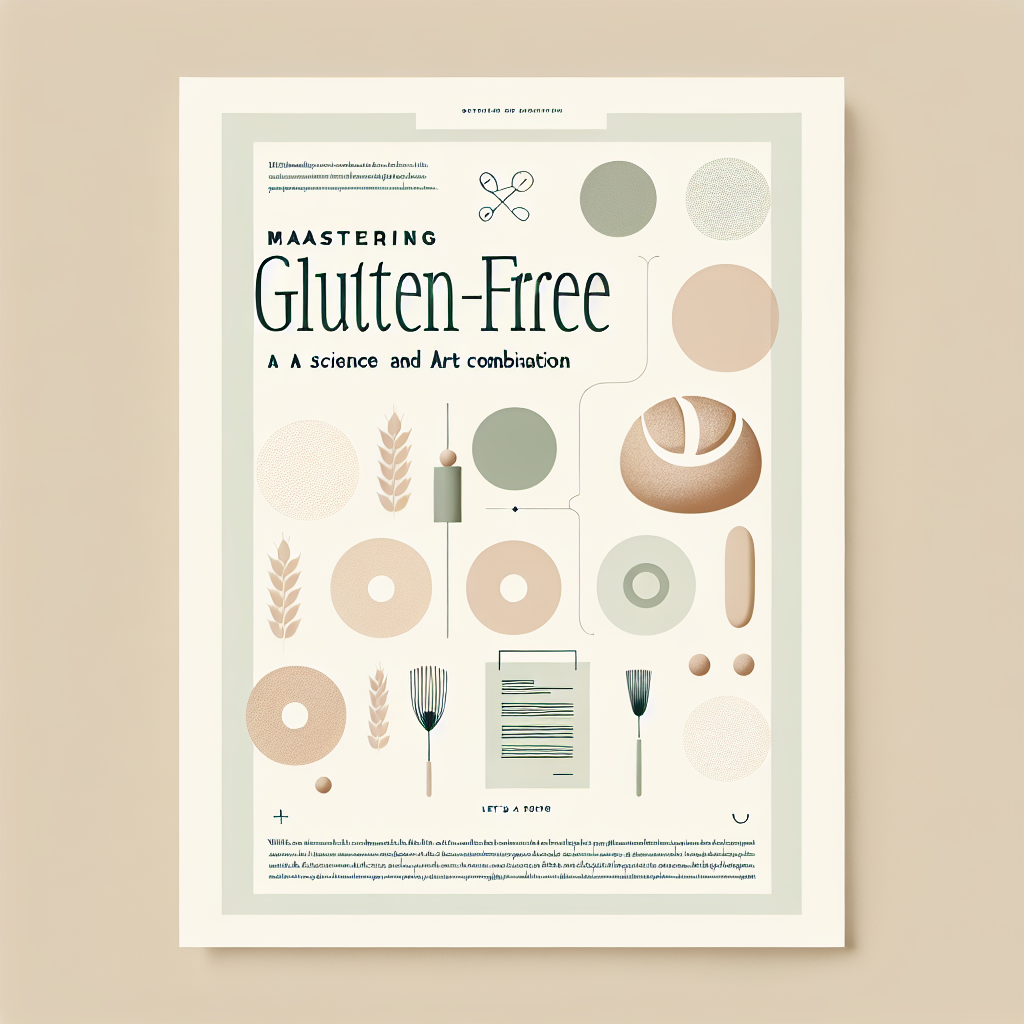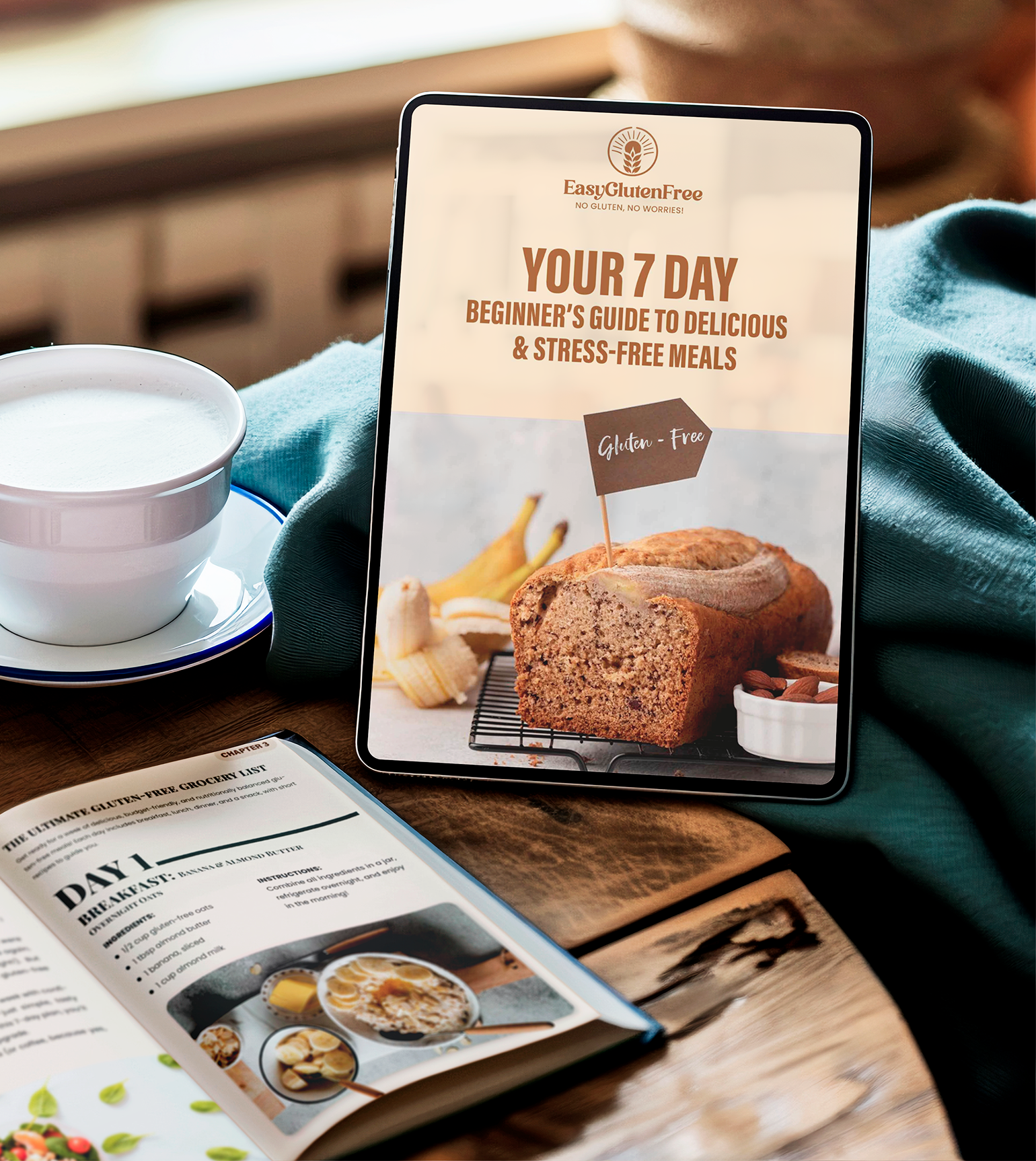It was a sunny afternoon when I received a message from Bethany, an Easy Gluten Free follower. She had been living a gluten-free lifestyle for about a year now and while she was enjoying the health benefits, there was a dilemma. Bethany wrote, “Claire, I am craving some delicious, homemade bread, but I’m worried I will not achieve the right texture with gluten-free ingredients. What should I do?”
This message from Bethany made me jump in delight. Not only was this a fantastic opportunity for me to share my knowledge, it was also a chance for me to revisit the fundamentals of making bread — a process I absolutely relish.
First, let’s get one thing straight: if you crave a warm and fluffy slice of bread, there’s no reason why you need to give it up – even in a world without gluten. Yes, you heard me right. Delicious homemade bread, soft and heartwarming, can absolutely exist in our gluten-free world!
So how do we achieve the perfect texture? Here’s the secret: understanding the magic happening behind the scenes. Baking, my dear friends, is a splendid blend of art and science. And today, we are going to explore, with some necessary help from fellow food scientists, the magic behind leavening, elasticity, and binding — the key factors in baking the perfect loaf of gluten-free bread.
Of the many things that give bread its character, two stand out: its volume and its chewiness. In traditional bread (the kind with gluten), these are achieved through the beautiful dance between yeast and gluten. As yeast ferments, it releases carbon dioxide which is then trapped by the stretchy gluten network, giving the bread volume and chewiness.
In a gluten-free world, however, we need to find perfect substitutes for these key players. And in doing so, we often stumble upon questions. If you are a seasoned baking pro, you can go with your keen instincts, but if you are less experienced, like our friend Bethany, setting out to make your first gluten-free loaf might feel like getting behind the wheel for the first time — exciting, but nerve-wracking.
That’s when your gluten-free guide steps in. Based on my experience and the advice of many other gluten-free lifestyle advocates, here are some excellent substitutes to achieve a desirable gluten-free bread.
1. Ditch store-bought mixtures: When it comes to the best taste and texture, you might want to consider [making your own gluten-free flour blend](URL). This gives you a chance to experiment with varying proportions until you achieve the taste and texture that suit your palate best.
2. Understand leavening: You need to be well-versed in the [science of leavening agents](URL) — these are the ingredients that create reactions resulting in gas bubbles that give the bread its volume. Some common leavening agents used in gluten-free baking are baking soda, baking powder, and yeast. Each contributes differently to the texture and flavor of the end product.
3. Boost the binders: Since we lose the binding property of gluten when we opt for gluten-free baking, we need to add that extra ‘sticky factor.’ Ingredients like xanthan gum and psyllium husk can provide this binding property, holding the architecture of your bread in place.
4. Keep it moist: To avoid a dry texture, since gluten-free flours tend to absorb more liquid, add enough liquid ingredients to your recipe to maintain a moist, tender crumb.
5. Practice patience: Unlike their glutenous counterparts, gluten-free mixtures need more time to rise. So make sure you give your dough enough time to rest and rise.
Creating beautiful and delicious gluten-free bread requires some getting used to. The dough is more like a batter; sticky and like thick pancake mix. It can be a bit disheartening if you’re used to traditional dough, but don’t worry! With the right tools and techniques, you will create the delicious, homemade bread you’ve been craving.
So, back to Bethany. She used our tips and guess what? She made an amazing loaf of gluten-free bread that she shared with her entire family. As she told us, “My family couldn’t believe it was gluten-free! They all want the recipe now.”
Remember to trust the process, have patience, and experiment. Like with any art form, you get better with practice. And the knowledge you gain along the way will not only help you make perfect gluten-free bread but also give you a holistic understanding of gluten-free baking overall. From one gluten-free Sarah to another, we’ve got this.
**Category: Baking & Cooking Science**



